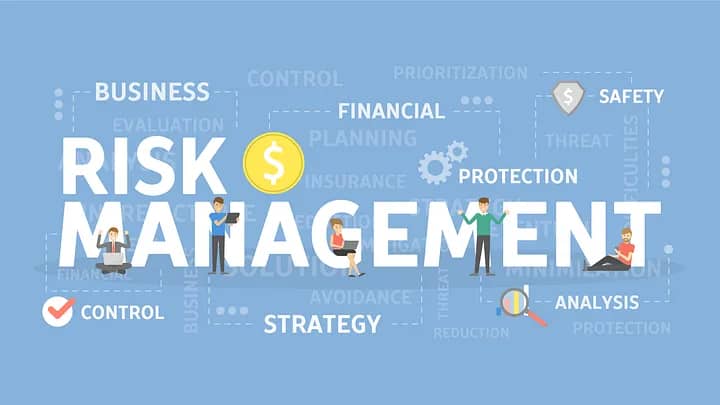
Risk management is an essential skill that every entrepreneur needs to cultivate to achieve in success in business. And it’s also essential to train your team too on how to effectively manage risks. Whether it’s standing at the edge of a decision with a drip of sweat forming on your brow or simply managing a team of perfectionists who think they know everything, risk management skills have become essential. It’s like teaching someone how to swim. Some may sink, some may float, but if you don’t at least try, they might end up bobbing in a sea of chaos!
Why Risk Management?
Before we dive headfirst into our methods, let’s consider—why risk management? It’s a fancy term, sure, but it’s really just a systematic way of making sure we don’t drive off a cliff. According to a study by the Project Management Institute, organizations that implement effective risk management see a 12% rise in project success rates. Impressive, right?
A Quick Reality Check:
Risk is not just for skydivers or daredevils. It’s part of every company’s daily operations. Here are some startling statistics:
- Global business losses from cyberattacks soared to $6 trillion in 2020. (Who said digital piracy was just for movie lovers?)
- 85% of project managers say risk management is crucial for project success but only 40% implement it effectively.(The classic “I know it’s important, but… nah” attitude.)
Method #1: Interactive Risk Management Workshops
To train your team on risk management, you have to organise interactive workshops geared at developing risk management skills. You can do these things;
- Create scenarios: Engage your team with real-life or hypothetical scenarios. Role-playing potential risk situations can bring their instincts to life.
- Divide into teams: Teamwork makes the dream work! Let them brainstorm on managing various types of risks. Then, let the best team win… or at least get a pat on the back.
A quote from no one famous enough to mention: “Working together is what makes dodging risks fun!” Okay, so maybe I’m not quite ready for a TED Talk, but you get the point.
Method #2: E-Learning Modules for Risk Management
Let’s face it; the world is digital. E-learning is a convenient way to equip your team with the knowledge they need while they enjoy their second cup of coffee.
- Modules on demand: Create bite-sized lessons covering risk identification, assessment, and response strategies that employees can take at their own pace.
- Quizzes and assessments: Keep it fresh and interactive. Wouldn’t it be thrilling to see who can answer the most questions correctly while sitting in pajamas?
Method #3: Simulation Games
Feeling adventurous? Simulation games can be a fantastic way to teach risk management.
- Gamification elements: Transform learning into a game! Get them to win points or rewards as they navigate through risks and win challenges.
- Real-world application: Use case studies to simulate real-world business challenges where participants must decide how to manage risks effectively.
As management guru Peter Drucker said, “What gets measured, gets managed.” But let’s be honest — what also gets gamified is a lot more fun!
Method #4: Encourage a Risk-Aware Culture
This one’s serious business! Creating a culture that embraces risk awareness is vital.
- Lead by example: If the leadership team takes risks seriously, everyone else will, too. Take calculated risks that demonstrate your faith in the process.
- Reward transparency: Encourage open discussions about risks. This way, team members won’t feel like they’re stepping into a shark-infested pool when they bring up potential issues.
According to a recent survey, teams with a risk-aware culture are **20% more productive** than those without. Seems like being aware of risks pays off – quite literally!
Method #5: Continuous Evaluation and Feedback on Risk Management abilities
The learning doesn’t stop. It’s crucial to continuously evaluate your training methods and gather feedback.
- Post-training surveys: Collect opinions on what they enjoyed and what didn’t land well. Think of it as Yelp but for training sessions.
- Regular refresher courses: Just because they completed the training doesn’t mean they get a shiny gold star and a day off! Offer regular review sessions.
And remember, as Benjamin Franklin wisely stated, “An investment in knowledge always pays the best interest.” Except maybe for that lovely trend of investing in avocado toast…
Let’s be real—risk management isn’t just an annual workshop. It’s a continuous journey where knowledge and awareness evolve. The five methods detailed above are more than just training options; they’re gateways to fostering an incredible risk-aware culture.
As the world continues to change rapidly, embracing the art of risk management is not just smart, it’s essential. You may not be able to predict the future, but with these actionable strategies, you can at least steer the ship securely through choppy waters.
—
FAQs
Q1. How often should we train our team on risk management?
A: Ideally, you should conduct risk management training sessions at least annually. However, quarterly refreshers can keep everyone sharp!
Q2. What if someone on my team is resistant to risk training?
A: Address concerns openly and provide examples of risks that could impact the team’s success. Use humor if it helps lighten the mood!
Q3. Are there specific industries that require more risk training than others?
A: Absolutely! Industries like finance, healthcare, and technology deal with more inherent risks. Tailor your training program to fit the needs of your industry.
Q4.How do I measure the effectiveness of the risk management training?
A: Utilize pre- and post-training assessments, gather feedback from participants, and track performance metrics related to risk management over time.
—
In closing, training your team on risk management shouldn’t feel like a chore. In fact, it can be lively, engaging, and perhaps a little disruptive—in the best possible way! Embrace it, laugh a little, and watch your team blossom into a well-oiled risk management machine. Cheers!









pictures of cialis cialis 5 mg for sale or wallmart cialis
https://www.google.vg/url?q=https://tadalaccess.com cialis commercial bathtub
generic cialis 20 mg from india when will cialis be over the counter and cialis tadalafil online paypal cialis from canada
online cialis no prescription cialis online without a prescription buy generic tadalafil online cheap
take cialis the correct way generic cialis super active tadalafil 20mg or purchasing cialis
https://www.google.com.au/url?sa=t&url=https://tadalaccess.com cialis what age
=kitchen+design+ideas+a+href=https://tadalaccess.com::”//tadalaccess.com/]]cheap cialis by post where can i buy cialis over the counter and cialis online pharmacy ordering cialis online
pictures of cialis pills: TadalAccess – cialis patent expiration date
cialis efectos secundarios pharmacy 365 cialis or cheap cialis 5mg
http://www.aaronsw.com/2002/display.cgi?t=<a+href=http://tadalaccess.com buying cialis online usa
cialis 5mg price comparison cialis for pulmonary hypertension and cialis vs flomax adcirca tadalafil
https://tadalaccess.com/# tadalafil tablets 20 mg side effects
cialis prostate: Tadal Access – cialis 5mg daily how long before it works
cialis 10mg TadalAccess buy generic tadalafil online cheap
https://tadalaccess.com/# buy cialis online no prescription
cialis prices: Tadal Access – best price on cialis
cialis superactive cialis canada free sample cialis 20mg side effects
canadian online pharmacy cialis what is the generic for cialis or cialis generics
https://sofortindenurlaub.de/redirect/index.asp?url=http://tadalaccess.com tadalafil lowest price
cialis for sale in canada best place to buy tadalafil online and tadalafil versus cialis where to buy cialis over the counter
buy tadalafil online paypal: Tadal Access – cialis 5mg daily how long before it works
is there a generic cialis available in the us cialis buy without or cialis free samples
https://toolbarqueries.google.si/url?sa=t&url=https://tadalaccess.com cialis free trial voucher
cialis experience reddit cialis same as tadalafil and where to get the best price on cialis cialis savings card
cialis generic release date cialis discount card cialis side effects a wife’s perspective
https://tadalaccess.com/# buy tadalafil online paypal
when does cialis go off patent: TadalAccess – cialis recreational use
is there a generic equivalent for cialis snorting cialis or ordering cialis online
https://cse.google.nr/url?sa=t&url=https://tadalaccess.com truth behind generic cialis
cialis amazon sildalis sildenafil tadalafil and no prescription cialis does tadalafil lower blood pressure
tadalafil liquid review buy cialis tadalafil cialis on sale
walgreen cialis price cialis website or cialis medicine
https://telemail.jp/_pcsite/?des=015660&gsn=0156603&url=tadalaccess.com over the counter cialis 2017
cialis directions best time to take cialis and where to buy liquid cialis where to buy tadalafil in singapore
https://tadalaccess.com/# cialis savings card
cialis 5mg daily how long before it works: Tadal Access – cialis stopped working
cialis from canada to usa buying cialis generic cialis interactions
cialis w/o perscription tadalafil oral jelly or tadalafil buy online canada
http://neurostar.com/en/redirect.php?url=http://tadalaccess.com/ cialis a domicilio new jersey
where to buy liquid cialis generic cialis from india and cialis copay card us cialis online pharmacy
no prescription female cialis: best time to take cialis 20mg – canada cialis for sale
https://tadalaccess.com/# cialis instructions
cialis effectiveness tadalafil dapoxetine tablets india cialis 20mg for sale
cialis 20 mg from united kingdom where to buy cialis over the counter or cialis sample pack
https://maps.google.lk/url?q=https://tadalaccess.com tadalafil walgreens
cialis and poppers truth behind generic cialis and canadian pharmacy tadalafil 20mg how much does cialis cost per pill
pastillas cialis: Tadal Access – special sales on cialis
https://tadalaccess.com/# tadalafil 40 mg india
tadalafil cheapest online cialis coupon online best price on cialis
generic cialis tadalafil 20 mg from india: cialis super active vs regular cialis – tadalafil with latairis
get antibiotics without seeing a doctor: BiotPharm – get antibiotics without seeing a doctor
Ero Pharm Fast ed pills for sale cheap ed drugs
cheapest antibiotics: buy antibiotics online – buy antibiotics from india
antibiotic without presription: BiotPharm – get antibiotics without seeing a doctor
Over the counter antibiotics pills: buy antibiotics online uk – buy antibiotics from canada
ed medicine online ed medication online ed pills
http://eropharmfast.com/# Ero Pharm Fast
online erectile dysfunction pills: cheapest online ed meds – online ed meds
Medications online Australia: pharmacy online australia – Discount pharmacy Australia
Ero Pharm Fast: Ero Pharm Fast – Ero Pharm Fast
low cost ed meds Ero Pharm Fast Ero Pharm Fast
https://biotpharm.com/# Over the counter antibiotics pills
Ero Pharm Fast: Ero Pharm Fast – Ero Pharm Fast
Licensed online pharmacy AU: Online drugstore Australia – Medications online Australia
order ed pills cheap ed treatment or buying erectile dysfunction pills online
https://maps.google.com.sb/url?sa=t&rct=j&url=https://eropharmfast.com cheapest online ed meds
best online ed medication best online ed medication and buy ed medication online ed prescription online
http://eropharmfast.com/# Ero Pharm Fast
buy antibiotics online get antibiotics quickly or get antibiotics without seeing a doctor
https://www.google.is/url?sa=t&url=http://biotpharm.com buy antibiotics for uti
get antibiotics without seeing a doctor Over the counter antibiotics pills and buy antibiotics over the counter buy antibiotics online
over the counter antibiotics: BiotPharm – cheapest antibiotics
buy antibiotics online: BiotPharm – Over the counter antibiotics for infection
Buy medicine online Australia online pharmacy australia online pharmacy australia
Over the counter antibiotics pills: buy antibiotics online uk – buy antibiotics over the counter
Pharm Au 24: Buy medicine online Australia – Online medication store Australia
https://pharmau24.com/# Online medication store Australia
online ed meds buy erectile dysfunction pills or buy ed pills online
https://www.google.co.nz/url?q=https://eropharmfast.com where can i buy ed pills
ed medicines edmeds and buying ed pills online ed pills for sale
Medications online Australia Medications online Australia or pharmacy online australia
https://images.google.sc/url?sa=t&url=https://pharmau24.shop pharmacy online australia
Online drugstore Australia online pharmacy australia and pharmacy online australia Pharm Au24
Over the counter antibiotics for infection: BiotPharm – antibiotic without presription
get antibiotics quickly buy antibiotics online or cheapest antibiotics
http://images.google.bi/url?q=https://biotpharm.com buy antibiotics online
Over the counter antibiotics for infection buy antibiotics from canada and buy antibiotics online over the counter antibiotics
antibiotic without presription: BiotPharm – buy antibiotics from india
Over the counter antibiotics pills BiotPharm get antibiotics without seeing a doctor
Ero Pharm Fast: low cost ed pills – Ero Pharm Fast
Online drugstore Australia: Online medication store Australia – Medications online Australia
http://eropharmfast.com/# cheap ed treatment
Online drugstore Australia Discount pharmacy Australia or Online medication store Australia
http://maps.google.com.mx/url?q=http://pharmau24.shop Pharm Au24
pharmacy online australia PharmAu24 and Online drugstore Australia pharmacy online australia
ed meds cheap buy erectile dysfunction treatment or cheapest ed treatment
https://maps.google.com.mt/url?q=http://eropharmfast.com online ed treatments
get ed meds online online ed prescription and get ed meds today erectile dysfunction medications online
best online doctor for antibiotics buy antibiotics from canada or best online doctor for antibiotics
https://clients1.google.com.vc/url?q=https://biotpharm.com get antibiotics quickly
buy antibiotics online buy antibiotics for uti and cheapest antibiotics get antibiotics without seeing a doctor
affordable ed medication ed meds on line or erectile dysfunction online prescription
https://www.google.es/url?q=http://eropharmfast.com order ed pills online
cheap ed cheap ed medication and п»їed pills online best online ed pills
kfmipw
yzvds8